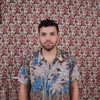The author (left), his sister, and his brother in Disneyland. All photos courtesy of the author.
This article originally appeared on VICE FranceThe town of Marne-la-Vallée was established in the west suburbs of Paris in the 1960s. It extends over a 20 km [12 mile] radius, from Bry-sur-Marne until Bailly-Romainvilliers and is divided into four parts. The eastern part of the town is called Val d'Europ. That is where I grew up.In the mid-1980s, Disney expressed an interest in building an amusement park in Europe. A couple of years later—on March 24, 1987—it was agreed that a Euro Disney Resort would be developed in France. The park would be called Disneyland Paris and settle in Val d'Europe. It is said that the Disney representative wanted a Mickey Mouse mascot to sign the agreement instead of him, but then French Prime Minister Jacques Chirac politely refused. The park finally opened its doors in 1992.
Advertisement
My family moved to Val d'Europe in 1998, when I was 5 years old. I can only vaguely remember the Seine-Saint-Denis flat in which we lived before that. When we first arrived in Val d'Europe everything seemed to be under construction but, then again, everything is always under construction over there: You can always see a crane popping above the strategically planted trees that flank the town's quiet streets. Our new home was a kit house—much like every other building on our street or in town. I distinctly remember feeling extremely excited to finally live in a house instead of a flat.The 1987 agreement established a partnership between the public and private sectors the likes of which France had never seen before. To put it simply, Disneyland owns my house and almost everything in it. Out of the 3,233 hectares making up Val d'Europe, 2,230 have been granted to Disney. It was the company who decided what the houses and the neighborhoods would look like and who would occupy them. In exchange, it would attract tourism and decrease taxes.Everything in Val d'Europe exists thanks to Mickey—the house in which I experienced my first memories, the park in which I played with my best friend, the lake around which I smoked my first cigarettes, even the trees I climbed pretending I was a wood elf and not a kid who ate alone in the school cafeteria.
The author and his sister in their constantly changing neighborhood
My parents always dreamed of owning a house in a developing part of France. Like many couples of their generation, they saw it as an opportunity to raise their kids in a privileged environment. Schools and shops kept opening—throughout my childhood, the town's as well as my family's finances were good. The park was only a few minutes away by car or half an hour away on foot, if you knew which roads to take. As soon as we moved there, my dad bought us annual passes to the theme park. Being a kid in Val d'Europe was truly a magical experience.
Advertisement
Truth be told, almost everybody living in the area had an annual pass, or a member of the family working at the park who could let other people in. I celebrated too many birthdays in Disneyland—always under the supervision of tired adults who wanted nothing less but to be spending weekends in their workplace.Still, I am very grateful to have grown up in Europe's leading tourist destination. The park offered bars, restaurants, a cinema, and diverse activities during the holidays. I got to know its roller coasters by heart—my friends and I memorized each turn, each loop, and the exact moment we should make a face if we wanted to spoil the family photo of the tourists sitting in the front. Without an inch of irony, we would agree to meet in Adventureland, in front of Alice in Wonderland's Labyrinth, or the X-Wing.Disney has also built some houses for its employees, right in the middle of the resort. These guys are often young people from all over the world, looking to get bored while dressed as Peter Pan for a season or two. The largest portion of Val D'Europe's residents also work for Mickey. When my friends and I reached summer job age, guess who employed us.Once we reached puberty, Disneyland began to lose its seductive power. The park started to resemble a workplace, while the Disney Village and its extremely expensive bars were slowly abandoned for the few places in which it was possible to drink and dance without the fear of knocking down a child.
I quickly fled that environment by going to high school in Paris. I turned my back on Disneyland's characters and attractions, its loud and fake colors, and I stopped buying annual subscriptions to the park. It must be a little less than five years since I was last there. Much like the rest of the components of my childhood, Disney's influence on my soul is starting to wane.Still, I find the extent of Disney's control over our lives fascinating. Without the park my parents would have probably never been able to open their small business but, at the same time, Disney swallowed our entire lives. We over-consumed the park and its artificial pleasures, often forgetting the outside world was a far cry from all that. Still, like a child's favorite toy, Disneyland will forever have a special place in my heart, even if I never go back.Follow Ilyass on Twitter.
